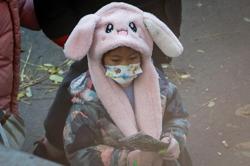We are fast running out of drugs that can effectively kill most microorganisms due to the rise in AMR among them. — Pixabay
Microorganisms, which may be bacteria, viruses, fungi or parasites, are ubiquitous in the environment.
While microorganisms are not hazardous in many situations, they can cause infections in humans and animals.
The range of infections due to microorganisms have been increasing in the past decades.
Antimicrobials are medicines that have been produced to eliminate or limit the growth of microorganisms when they infect humans and/or animals.
They include antibiotics, antivirals, antifungals, antimalarials, anthelmintics, etc.
Some microorganisms mutate over time, allowing them to adapt to certain antimicrobials and continue to survive and grow, even after they have been exposed to these medicines.
This leads to ineffectiveness of the antimicrobials, making infections harder to treat and increasing the risks of spreading the infection to others, as well as severe disease and death.
The microorganisms that develop antimicrobial resistance (AMR) to many drugs are commonly called “superbugs”.
Health and economic impact
A review of the global burden of bacterial AMR published in The Lancet medical journal in 2022 estimated that there were 4.95 million deaths associated with bacterial AMR in 2019, including 1.27 million deaths directly attributable to bacterial AMR.
Lower respiratory infections accounted for more than 1.5 million deaths, making it the most burdensome infectious syndrome.
The six leading pathogens for deaths associated with resistance were Escherichia coli, Staphylococcus aureus, Klebsiella pneumoniae, Streptococcus pneumoniae, Acinetobacter baumannii and Pseudomonas aeruginosa.
AMR is also a problem in Malaysia, as was recognised in the 2018 publication Malaysian Action Plan on Antimicrobial Resistance (MyAP-AMR) 2017-2021 by the Health Ministry and the then Agriculture and Agro-based Industry Ministry.
Failure to address AMR has economic consequences.
According to a 2019 article in the journal Infection and Drug Resistance, the US Centres for Disease Control and Prevention (CDC) estimated that costs due to AMR was US$55 billion (RM259.7 billion) annually, of which US$20bil (RM94.4bil) was direct costs and US$35bil (RM165.3bil) was due to loss of productivity.
Rebranding the Week
The 2015 World Health Assembly adopted a global action plan on AMR, the objectives of which are:
- To improve awareness and understanding of AMR through effective communication, education and training.
- To strengthen the knowledge and evidence base through surveillance and research.
- To reduce the incidence of infection through effective sanitation, hygiene and infection prevention measures.
- To optimise the use of antimicrobial medicines in human and animal health.
- To develop the economic case for sustainable investment that takes account of the needs of all countries and to increase investment in new medicines, diagnostic tools, vaccines and other interventions.
An annual campaign, called World Antimicrobial Awareness Week (WAAW), was established to increase global awareness and understanding of AMR.
This Week is commemorated from Nov 18 to 24 annually.
In June (2023), the World Health Organization (WHO), Food and Agriculture Organization (FAO), the United Nations Environment Programme (UNEP) and the World Organisation for Animal Health (WOAH) announced the rebranding of WAAW as World AMR Awareness Week.
The theme for this year is “Preventing antimicrobial resistance together”.
Essential interventions
In October (2023), the WHO published a core package of interventions to address AMR.
They are based on four pillars:
- Prevention of infections
- Access to essential health services
- Timely, accurate diagnosis, and
- Appropriate, quality-assured treatment.
The pillars are supported by two foundational steps: Effective governance, awareness and education; and strategic information through surveillance and research.
The interventions are:
- AMR advocacy, governance and accountability in the human health sector, in collaboration with other sectors.
- AMR awareness-raising, education and behaviour change of health workers and communities.
- National AMR surveillance network to generate good quality data to inform patient care and action on AMR.
- Surveillance of antimicrobial consumption and use to guide patient care and action on AMR.
- AMR research and innovation, including behavioural and implementation science.
- Universal access to water, sanitation and hygiene, and waste management, to mitigate AMR.
- Implementation of infection prevention and control core components to mitigate AMR.
- Access to vaccines and expanded immunisation to manage AMR.
- Health services for the prevention, diagnosis and management of infectious disease syndromes being made available and affordable for all.
- Uninterrupted supply of quality-assured, essential health products for the prevention, diagnosis and management of infectious disease syndromes.
- Good quality laboratory system and diagnostic stewardship to ensure clinical bacteriology and mycology testing.
- Up-to-date evidence-based treatment guidelines and antimicrobial stewardship programmes.
- Implementation of regulations to restrict non-prescription antimicrobial sales.
Everyone has a role
While waiting for the response to the WHO recommendations from the Health, and Agriculture and Food Security, Ministries, everyone can do their part to reduce the threat of AMR.
A common habit of many Malaysians is to request – sometimes demand – antibiotics from their primary care doctors for common respiratory infections.
Antibiotics are only effective against bacteria, and not viruses, which are the common cause of respiratory infections in the community.
Antibiotics are only required when there is a bacterial infection that is superimposed on a viral infection – this seldom occurs in the community setting.
Another habit of many Malaysians is to obtain antibiotics over the counter (OTC) without a doctor’s prescription.
Self-medication and/or prescription of antibiotics by someone other than a doctor can only help to promote AMR in the person taking the antibiotic.
A lack of awareness of the dangers of inappropriate use of antimicrobials without a prescription and the importance of seeking and following advice on treatment from qualified healthcare professional also promotes AMR.
The inappropriate promotion and advertisement of antimicrobials in the media, particularly the electronic media, contributes to the lack of accountability in sales of antimicrobials.
There is much that healthcare professionals can do to improve infection prevention and control in their practices.
Professionals involved in animal husbandry can also do much to ensure that antimicrobials are used appropriately in animal health, which is intertwined to human health.
Last, but not least, the government has a duty to ensure that antimicrobials are not used inappropriately with measures that include:
- The restriction of non-prescription sale of antimicrobials to prevent unsafe self-treatment practices
- The restriction of inappropriate promotion of antimicrobials and the raising of public awareness on the importance of seeking medical advice to reduce excess prescriptions and OTC demand, and
- Tracking the movement of antimicrobials along the value chain, from production or importation to the point of sale, to increase accountability at all levels and reduce non-prescription and unauthorized sales.
In summary, everyone has a role to play to address AMR.
Those who purchase antimicrobials OTC and self-medicate are reminded of the phrase “caveat emptor” (i.e.”Let the buyer beware”).
Dr Milton Lum is a past president of the Federation of Private Medical Practitioners Associations and the Malaysian Medical Association. For more information, email starhealth@thestar.com.my. The views expressed do not represent that of organisations that the writer is associated with. The information provided is for educational and communication purposes only, and it should not be construed as personal medical advice. Information published in this article is not intended to replace, supplant or augment a consultation with a health professional regarding the reader’s own medical care. The Star disclaims all responsibility for any losses, damage to property or personal injury suffered directly or indirectly from reliance on such information.





